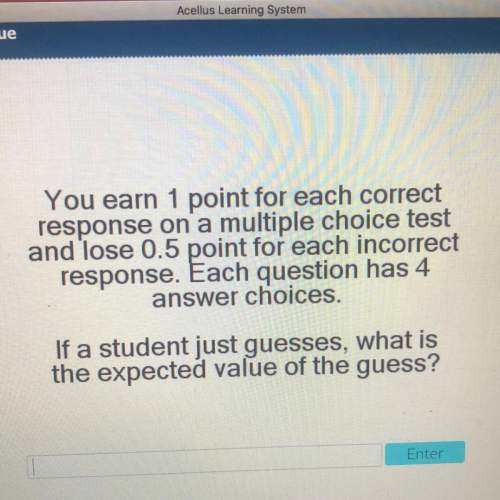
Mathematics, 01.05.2021 16:50, am2garcia5
A survey of 13,414 students in a country who enrolled in private career colleges was conducted to understand student participation in the private postsecondary educational system. In one part of the survey, students were asked about their field of study and about when they entered college. Here are the results.
Field of Number of Time of Entry
Study Students
Right After High School Later
Trades 942 34% 66%
Design 584 47% 53%
Health 5085 40% 60%
Media/IT 3148 31% 69%
Service 1350 36% 64%
Other 2255 52% 48%
In this table, the second column gives the number of students in each field of study. The next two columns give the marginal distribution of time of entry for each field of study.
The survey also asked about how these college students paid for their education. A major source of funding was government loans. Here are the survey percents of private students in the country who use government loans to finance their education by field of study.
Field of Study Number of Students Percent Using Government Loans
Trades 942 45%
Design 589 53%
Health 5294 55%
Media/IT 3218 55%
Service 1368 60%
Other 2360 47%
(a) Construct the 6 ✕ 2 table of counts for this exercise.
Using Government Loans
Field of Study Yes No
Trades
Design
Health
Media/IT
Service
Other
(b) Test the null hypothesis that the percent of students using government loans to finance their education does not vary with field of study. Be sure to provide all the details of your significance test. (Use α = 0.01.)
State the null and alternative hypotheses.
Null Hypothesis: (Choose one of the statements)
H0: There is an association between field of study and number of students.
H0: There is an association between field of study and taking government loans.
H0: There is an association between number of students and taking government loans.
H0: There is not an association between field of study and number of students.
H0: There is not an association between field of study and taking government loans.

Answers: 3
Other questions on the subject: Mathematics

Mathematics, 21.06.2019 15:20, aliceotter2007
Asmall (but heavy) particle placed in a glass of water will follow a zigzag motion because the particle will bounce off of the water molecules it meets. this is called brownian motion. a physicist simulates this on a computer, by varying the distance a particle can travel (called the mean free length), on average, before it collides with a water molecule and assigning the change in motion to be one of 8 directions, each with a similar probability. by running the simulated particle (with the same mean free length) many times she determines that it should take 15 seconds, on average, for the particle to fall to the bottom, with a standard deviation of 1.5 seconds. next she lets a real particle fall through a glass of water and finds that it took 18 seconds. what does she conclude, and why?
Answers: 1



Mathematics, 21.06.2019 23:50, ranchgirljls
Find the interior angle of a regular polygon which has 6 sides
Answers: 1
Do you know the correct answer?
A survey of 13,414 students in a country who enrolled in private career colleges was conducted to un...
Questions in other subjects:

Mathematics, 16.02.2020 07:12

Mathematics, 16.02.2020 07:12

Mathematics, 16.02.2020 07:12

Mathematics, 16.02.2020 07:12


English, 16.02.2020 07:13

History, 16.02.2020 07:13


English, 16.02.2020 07:15







